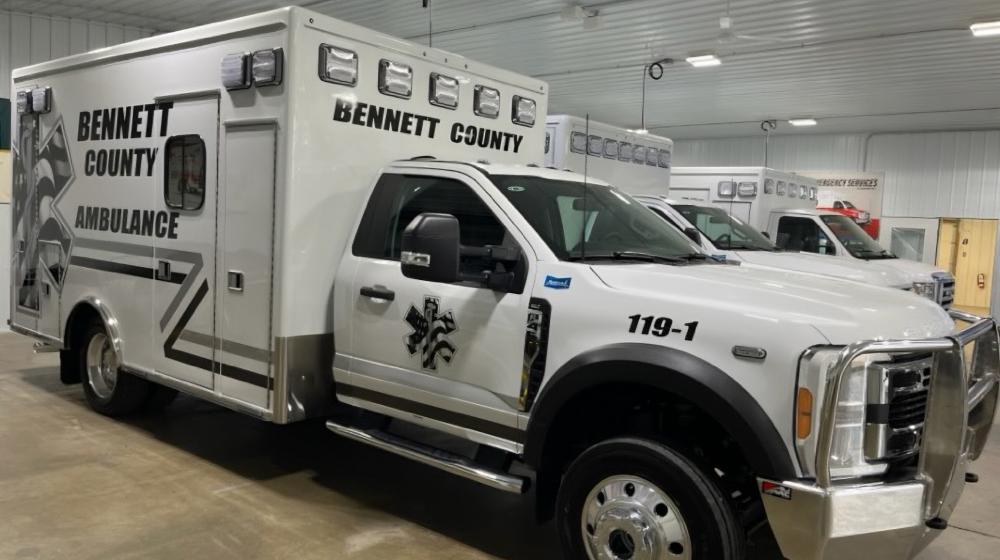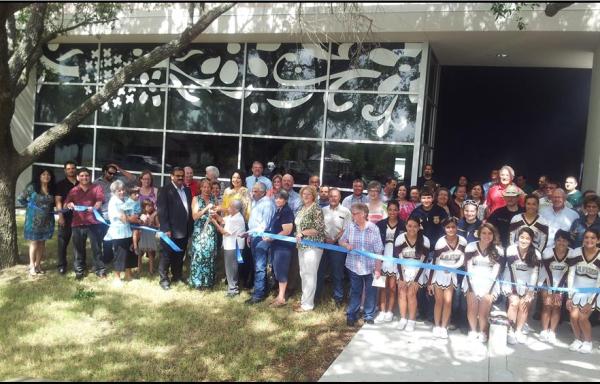
| What-if-the-ambulance-never-comes-Bennett-County-Hospital.mp3 |
A critical need to emergency health care is a reliable ambulance service, and it's even more critical in rural areas. But what if you can't rely on that ambulance? What if that ambulance never comes?
“We actually, on a couple occasions in 2021 and two had an ambulance go out and then they couldn't get it started to come back and then somebody had to take another ambulance out to bring the patient back,” said Michael Christensen, Bennett County Hospital CEO.
Michael says delivering care in rural South Dakota is no easy feat. “I think it's about 2300 square mile radius that we would be if you put a pin on it,” said Michael. “That's kind of the circle about where we go.”
"I don't want somebody in the ambulance and I'm trying to get the ambulance to start."
If you don't have reliable ambulances, your EMS team might not be willing to assume the risk.
“A volunteer just saying, ‘I know good medicine, I'm a good EMS, but I don't want to be responsible for somebody in the back of an ambulance and me out there with the Jumpstart Battery trying to pound the starter to get the starter to run and bring the patient back.’ You know, and that was reality until we were able to take advantage of the USDA program,” said Michael.
Mary Lize Stotz is a Loan Specialist with USDA Rural Development’s Community Facilities program. “I was just working on the ERHC grants at that time, and Katie gave me a lead as she was working on the hospital and saying they could really use some equipment,” said Mary Liz. The Rural Development Emergency Rural Health Care Grant provided investments to many projects across the state, and Bennett County found ways to create a lasting impact on the Martin area.
“So we were able to buy two new ambulance units,” said Michael. One of those ambulances offers a unique connection that is proven priceless in critical situations. “We now have the easy button and one of those two ambulances. So what that means is there is an emergency medical doctor who is on call for our ambulance. When we take an ambulance, run out into the field 35 miles out, and we have a driver and an EMT, they have a high definition camera and a connection so that they can, in real-time, put the doctor on board in the back of the ambulance virtually.”
"It probably saved that patient's life."
So the doctor who is somewhere else and is specially trained is able to see the condition of that patient and be preparing for the hospital before the patient arrives. Because of that connection, a doctor can identify a need before the patient even reaches the hospital. On one occasion, the EKG and live feed showed the doctor the patient was in real trouble.
“We actually had the helicopter meet us in the field so that we didn't have to come back to the hospital, which probably saved that patient's life,” Michael said. “Had we not had a USDA grant, we would not have had the new equipment. We had would not have been eligible to get that additional equipment and we would not have had that capability.”
But rural health care extends beyond emergency care. Some patients needing routine care may not be able to travel.
“We have nurses and aides and homemakers who travel into patients homes in order to care for them at home,” Michael said. “We were able to purchase two new four-wheel-drive vehicles for those nurses to be able to go out into the community and visit patients in their home. So going out to them, bringing the care to them is not only creates better access for them, but in many ways it is better care.”
Bennett County is grateful for the USDA programs which have provided these critical services to the Martin area and offered an opportunity to further care for and protect patients throughout the health care system.
"We save lives every day because of where we are."
“I don't believe that there's much that we do that has not been positively affected by one of those pieces of equipment or one of those resource, those that have been made available to us,” said Michael.
And it will save lives. “There's no question that we saved lives every day by being where we are. There have been people that say, ‘why is the USDA involved in health care?’ I have seen the effect of the community hospital closing and the impact it had on a rural community, which literally, aside from an old map, no longer exists,” Michael said.
Rural development programs are designed to reach across the community. Mary Liz said, “There are programs that help the businesses and the co-ops and the housing, which all of these things feed off of each other.”
"Don't be afraid to go talk to USDA."
“If I were to talk to somebody in Kentucky or somebody in Massachusetts or somebody in Mississippi, I would say don't be afraid to go and talk to the USDA,” said Michael. “Don't be afraid to go say, hey, I've never done this before. I need you involved early. I need you involved quick. Talk to them about your dreams and your plans and how we might move forward and have them inform you and work together. This is a true partnership.”
Rural Development offers many programs for rural communities, businesses and homeowners. Learn more by visiting RD.USDA.Gov/SD.

